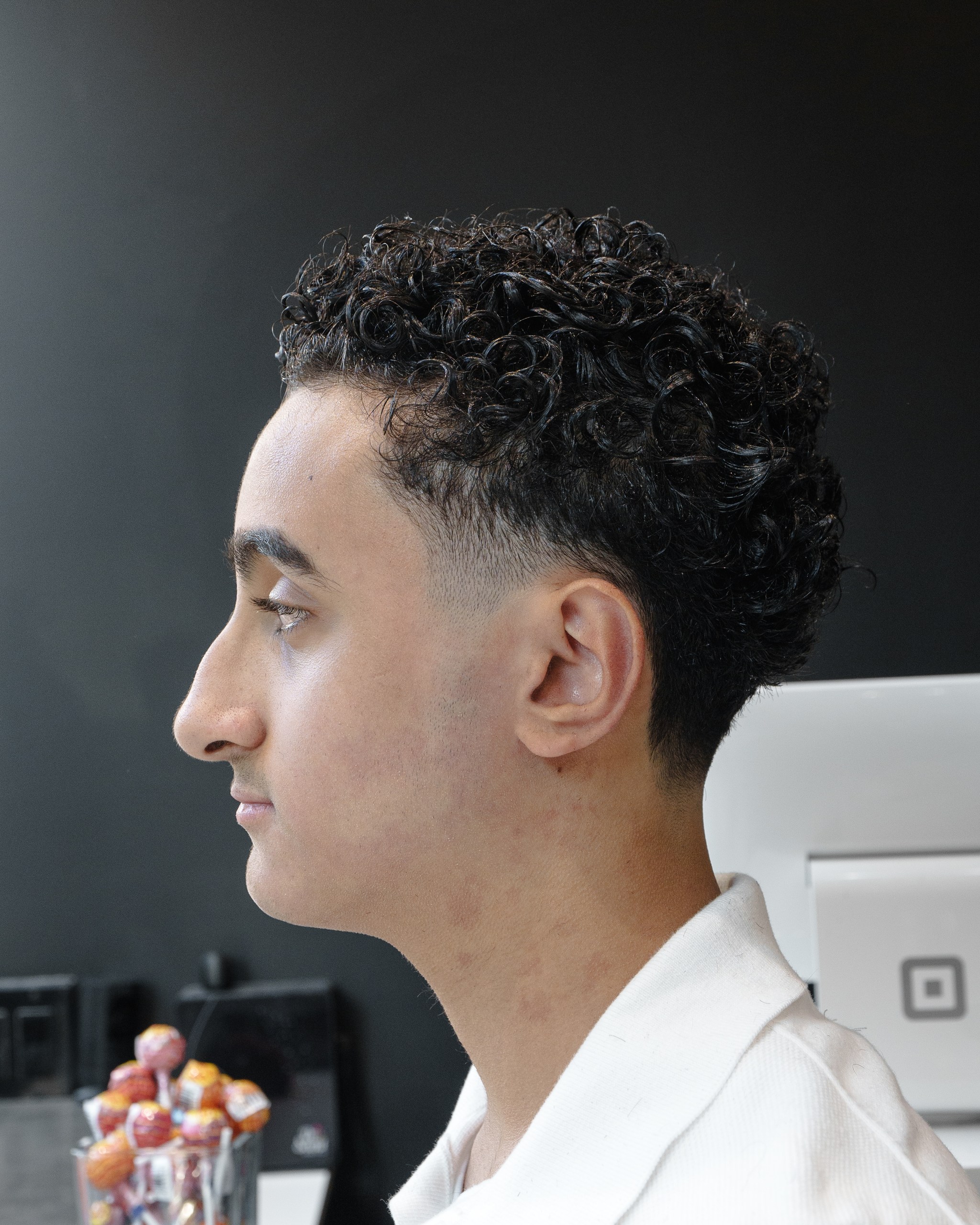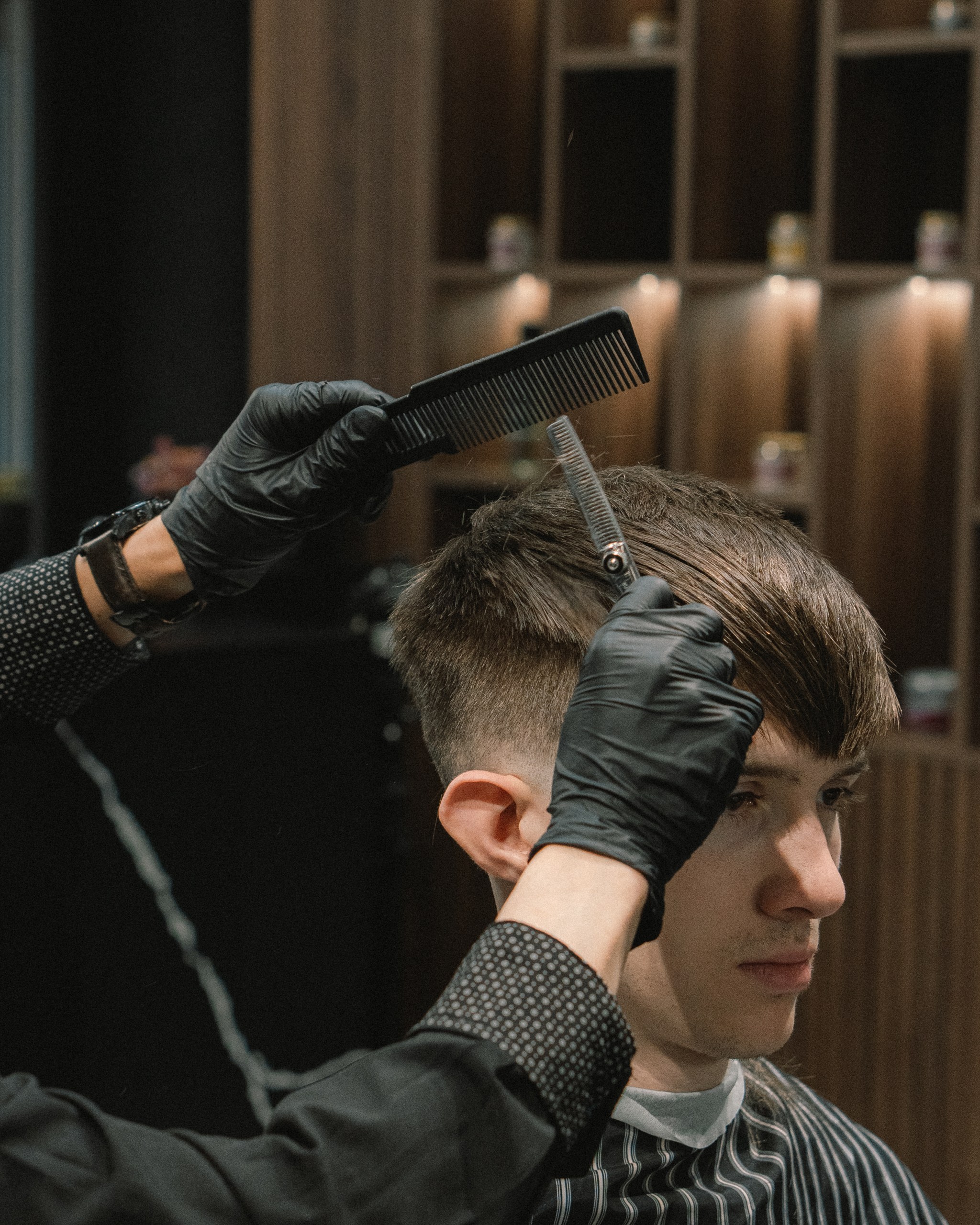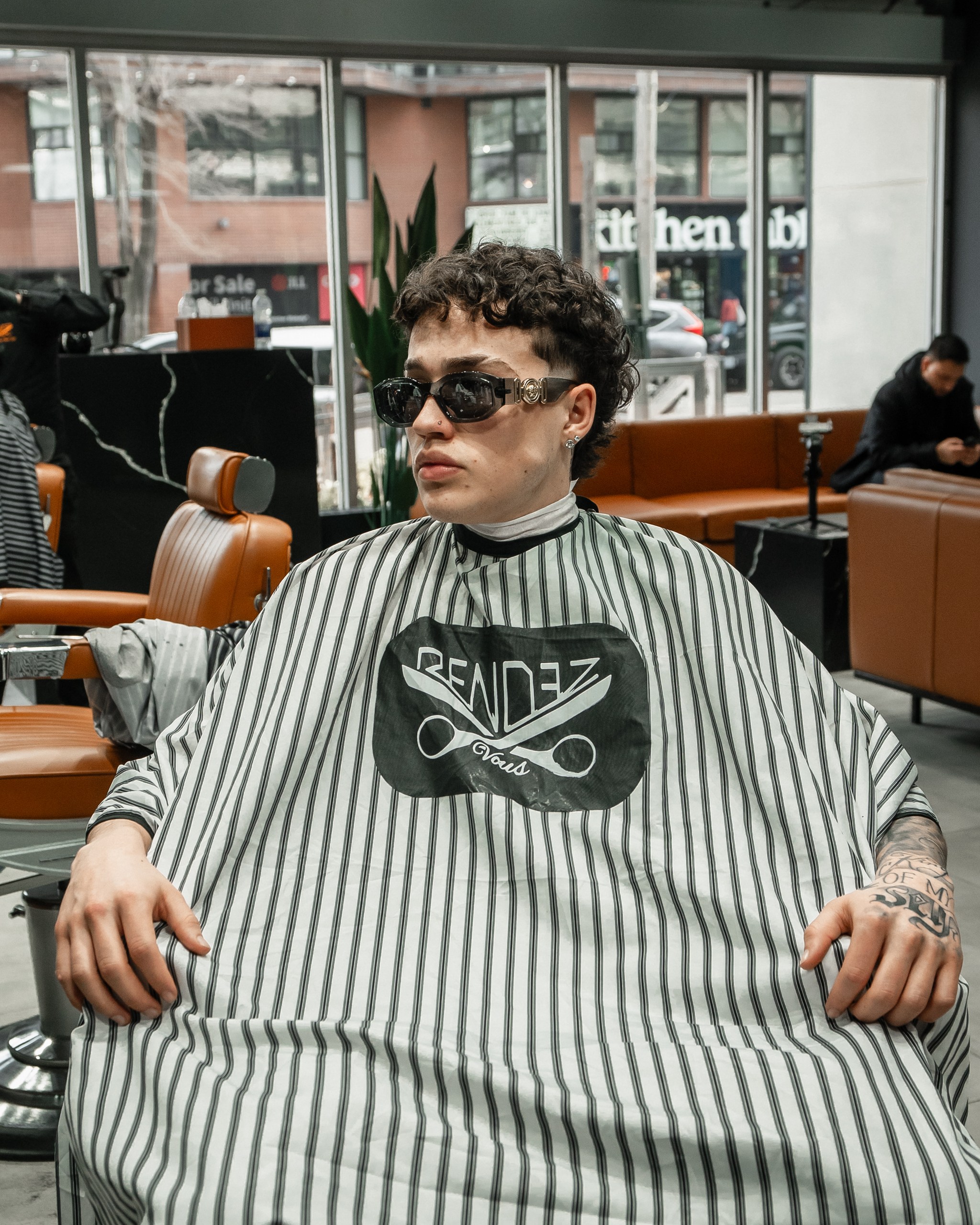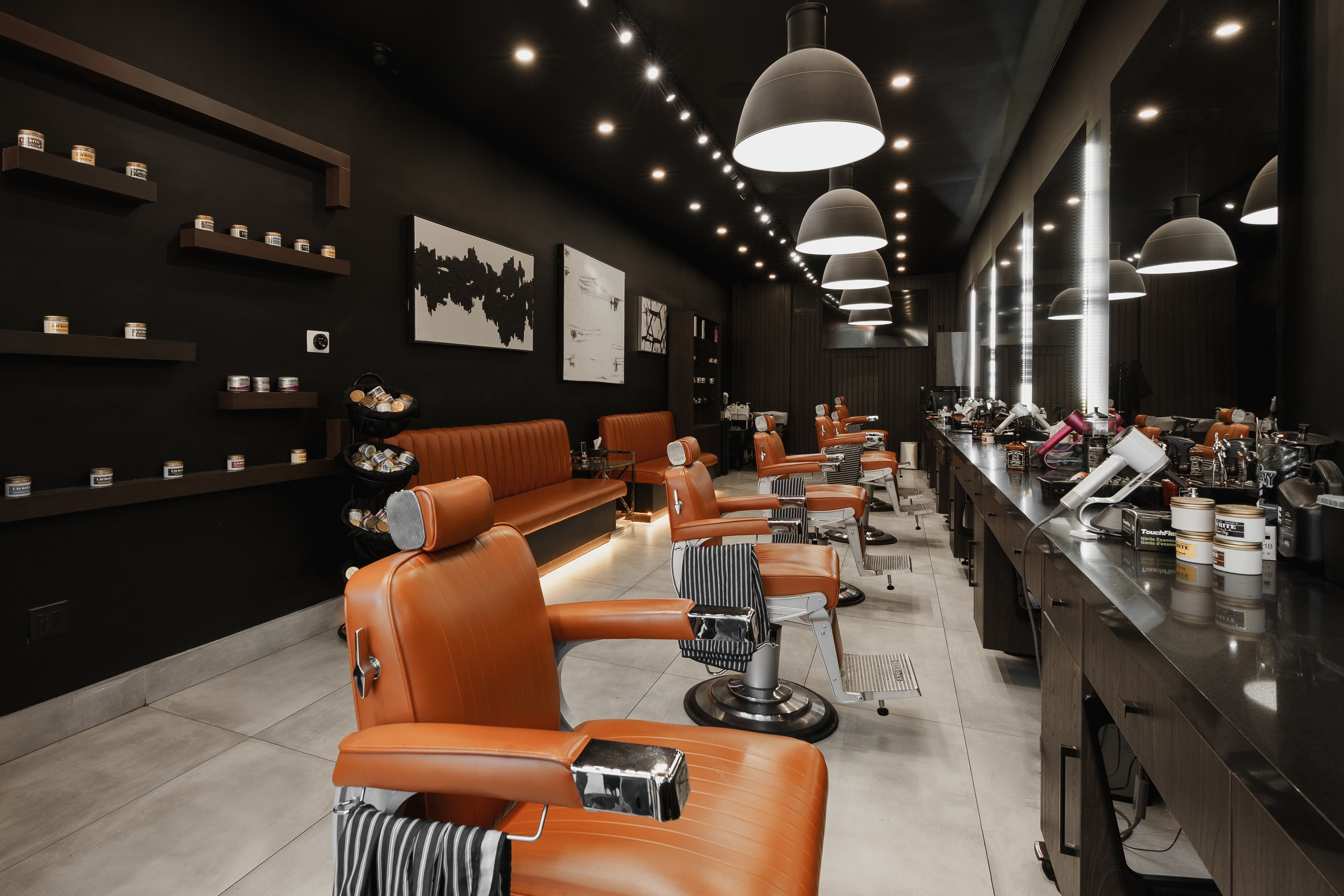There's been a quiet rebellion happening against the over-styled, product-heavy haircuts that dominated men's grooming for the past decade. Guys got tired of spending 20 minutes every morning with blow dryers and pomade trying to force their hair into submission.
The response is a shift toward styles that work with natural texture and movement rather than against it. Flow cuts let your hair move naturally. Textured crops emphasize your hair's actual characteristics. Middle parts work with natural growth patterns instead of forcing side parts.
At Rendezvous Barbers, we've watched this trend gain momentum as guys realize that looking good doesn't require fighting their hair's natural inclinations every single day. These styles deliver impact through smart cutting rather than aggressive styling, which means less time in front of the mirror and more authentic results.
Here's what actually defines these natural movement styles and whether they'll work for your specific hair situation.
The Flow Cut: Embracing Length and Movement
Flow cuts are essentially longer styles that prioritize natural movement and texture over structured shape. Think surfer hair, hockey player flow, or that effortlessly cool look that seems like it just happens (but actually requires the right cut to work).
The defining characteristic is length – usually collar-length or longer – combined with layering and texturing techniques that create movement. The hair literally flows rather than sitting static on your head.
This style emerged from athletic contexts, particularly hockey culture where "flow" became shorthand for longer hair worn under helmets. Toronto's hockey connection helped normalize the style locally faster than in cities without strong hockey culture.
What makes flow cuts work is the combination of length with proper cutting technique. Just growing your hair long doesn't create flow – you need layering that removes weight, texturing that adds dimension, and shape that complements your head rather than creating awkward bulk.
The result is hair that moves when you move, catches light differently from various angles, and looks dynamic rather than static. When executed well, flow cuts appear effortless even though they require significant cutting skill to achieve.
Hair type requirements are significant. Flow cuts work best with wavy or slightly curly hair that naturally creates texture and movement. Straight hair can do flow but often looks flat or lifeless without natural wave to enhance. Very curly hair can work but requires specific cutting approaches to create flow rather than bulk.
Face shape considerations matter too. Longer flow cuts can overwhelm smaller faces or make long faces appear even longer. The style typically works best with balanced or angular face shapes that can handle the added hair volume.
Lifestyle compatibility is crucial. Flow cuts require hair long enough that it gets in your face during physical activities, needs management during sleep, and takes longer to wash and dry. If you're not willing to deal with longer hair realities, flow won't work regardless of how good it looks.
Maintenance requirements sit somewhere in the middle. You don't need frequent cuts – every 6-8 weeks often works fine. But you do need to maintain the layering and shape through consistent trims rather than just letting it grow wild.
Styling effort is relatively low daily but product selection matters. Flow cuts need lightweight products that enhance natural texture without weighing hair down or creating stiffness. Sea salt sprays, light creams, or texture powders work better than heavy pomades or gels.
Toronto's climate affects flow cuts more than shorter styles. Summer humidity can make wavy hair frizzier, which either enhances the textured look or creates unwanted chaos depending on your hair type. Winter static and hat hair become real concerns with longer styles.
The Textured Crop: Controlled Natural Texture
Textured crops represent the opposite length approach while maintaining the natural texture philosophy. Instead of longer flowing hair, crops are short on sides with textured, piece-y tops that emphasize your hair's natural characteristics.
The "crop" refers to relatively short overall length, typically with sides that are short (but not necessarily faded) and tops that maintain enough length for texture and styling – usually 1-3 inches.
What makes it "textured" is the cutting technique. Instead of blunt, uniform cutting, textured crops use point cutting, razor work, or texturizing shears to create dimension and separation. The hair naturally separates into pieces rather than lying flat as a uniform layer.
This technique creates several benefits. The texture adds visual interest and dimension that solid, uniformly-cut hair lacks. The piece-y separation makes hair appear thicker and more voluminous. The natural, slightly messy appearance looks contemporary and effortless.
Textured crops work across more hair types than flow cuts. Straight, wavy, and even slightly curly hair can all produce good textured crops. The cutting techniques adapt to enhance whatever natural texture exists.
Face shape versatility is another advantage. Crops can be adapted for various face shapes through adjustments in fringe length, side length, and overall proportions. Round faces benefit from height and texture on top. Long faces work with wider, less vertical styling.
Professional appropriateness is generally high. Textured crops read as clean and intentional without looking overly styled or aggressive. They work in most Toronto workplace contexts from creative industries to fairly conservative offices.
Maintenance frequency requires more regular cuts than flow styles – typically every 3-4 weeks to maintain the shape and texture. As crops grow out, they quickly lose the defined texture and start looking shaggy rather than intentionally styled.
Daily styling is moderate. You'll use product to create and maintain the textured, piece-y effect – usually clay, fiber, or paste for matte finish and texture. Application takes 5-10 minutes but doesn't require blow-drying or complex techniques.
The key to good textured crops is the cutting. Mediocre execution just looks like short hair. Skilled cutting creates dimension and separation that makes the style work. Check your Toronto barber's portfolio for textured crop examples before committing.

The Middle Part: Working With Natural Growth
Middle parts represent the simplest concept of these three styles – literally parting your hair in the center rather than to one side – but execution matters more than the basic concept suggests.
The middle part trend emerged partly as rebellion against the rigid side parts that dominated previous years and partly as Gen Z nostalgia for 90s aesthetics. What makes contemporary middle parts different from 90s versions is the styling approach and texture.
Modern middle parts emphasize natural texture and slightly messy styling rather than the flat, curtain-hair look from the 90s. The part itself might be clean or slightly textured depending on preference, but the overall effect is less rigid and structured.
Natural growth pattern compatibility matters significantly. Some guys' hair naturally wants to part in the middle, making the style easy to achieve and maintain. Others have strong cowlicks or directional growth that fights middle parts, requiring daily effort to maintain the look.
Testing whether your hair naturally cooperates with middle parts is simple – wash your hair and see where it naturally falls. If it wants to part center or close to it, you're working with your hair. If it strongly pulls to one side, you're fighting natural patterns daily.
Length requirements are moderate. Middle parts need enough length to actually part and fall on both sides – typically 3-4 inches minimum on top. Shorter hair doesn't provide enough material to create the distinctive middle-parted look.
Face shape considerations affect whether middle parts flatter or emphasize unflattering features. Oval and heart-shaped faces typically work well with middle parts. Round faces might appear rounder with the symmetrical framing. Long faces can look even longer with vertical middle part emphasis.
Styling simplicity is the major appeal. Middle parts require minimal daily effort if your hair naturally cooperates. Wash, apply light product, part down the middle, and you're basically done. The style relies on natural texture rather than forcing structure.
However, this simplicity only applies if your growth patterns cooperate. Guys with strong cowlicks or directional growth might spend more time fighting their hair into middle parts than they would just working with side parts that follow natural patterns.
Professional context acceptance has shifted. A few years ago, middle parts read as young and potentially unprofessional. Now they're normalized enough that most Toronto workplaces accept them, though very conservative environments might still prefer side parts.
The middle part trend also intersects with longer length trends. Many guys combine middle parts with flow-length hair, creating that 90s-inspired longer look. Others keep length moderate while maintaining the center part.
Combining These Styles
These three styles aren't mutually exclusive – many contemporary cuts combine elements from multiple approaches.
Flow cuts can incorporate textured cutting techniques that enhance natural movement. The layering and texturing that creates flow works with the same principles that make textured crops interesting.
Middle parts work with both flow lengths and textured crop lengths. You can have flowing, middle-parted hair or a cropped cut with center-parted fringe.
The common thread is embracing natural texture and movement rather than fighting it with heavy styling. Whether you choose longer flow, shorter crops, or middle-parted anything, the philosophy is the same – work with what your hair does naturally.
Product Selection for Natural Texture
These natural movement styles require different products than heavily-styled cuts. The goal is enhancing what's already there rather than forcing structure.
Sea salt sprays add texture and volume to flow cuts and longer middle parts. They enhance natural wave without adding weight or stiffness.
Texture powders create volume and grip for textured crops and shorter styles. They add dimension without visible product residue.
Light clays or pastes provide hold and definition while maintaining natural movement. They create piece-y separation without the wet, gelled look.
What to avoid: Heavy pomades, strong gels, or anything that creates stiffness or high shine. These products fight against the natural, textured aesthetic these styles aim for.
Toronto humidity affects product performance significantly. Summer moisture can either enhance natural texture or create frizz chaos depending on your hair type. Winter dryness and static require different product approaches.
Maintenance Realities
Each style has distinct maintenance characteristics that affect whether they're practical for your lifestyle.
Flow cuts need the least frequent barbershop visits – 6-8 weeks often works – but require more daily hair management. Longer hair simply takes more time to wash, dry, and maintain than shorter cuts.
Textured crops need regular cuts every 3-4 weeks but minimal daily styling time. The frequent barbershop visits keep texture and shape crisp.
Middle parts with moderate length sit in between – cuts every 4-5 weeks with moderate daily maintenance depending on your natural growth patterns.
Your personal trade-offs matter. Would you rather spend time daily maintaining hair or spend money and time on frequent barbershop visits? Neither answer is wrong – they're just different priorities.
Toronto Climate Considerations
Toronto's weather extremes affect these natural texture styles differently than more structured, product-heavy cuts.
Summer humidity either enhances natural texture and movement or creates frizzy chaos. Wavy hair often looks great with summer moisture. Fine straight hair might struggle with humidity-induced limpness.
Winter dryness can make natural texture look more pronounced (good) or create static and flyaways (bad). The indoor heating combined with outdoor cold stresses hair significantly.
Hat season is brutal for flow cuts and middle parts. Putting on winter hats flattens and disrupts these styles more than shorter, tighter cuts. The daily hat-on, hat-off cycle creates maintenance challenges.
These seasonal factors should influence style decisions for Toronto guys. A flow cut that looks amazing in summer might be frustrating through winter hat season.
Making the Choice
Selecting between flow cuts, textured crops, and middle parts requires honest assessment of your hair type, lifestyle, and preferences.
Choose flow cuts if you have wavy or textured hair, don't mind longer hair management, and want maximum natural movement and contemporary edge.
Choose textured crops if you want short, low-maintenance length with visual interest and professional appropriateness across contexts.
Choose middle parts if your hair naturally cooperates with center parting and you want simple styling with contemporary appeal.
Or combine elements – middle-parted textured crops, flowing middle parts, textured flow cuts – based on what actually works for your specific hair and situation.
The Bottom Line
Natural texture and movement styles represent a shift away from over-styled, product-heavy cuts toward working with your hair's actual characteristics. Whether through longer flow, textured crops, or simple middle parts, the philosophy is the same – smart cutting that enhances natural qualities rather than fighting them.
The right choice depends on your hair type, face shape, lifestyle, and maintenance preferences. Honest assessment of these factors leads to better results than chasing trends that don't match your reality.
Book your appointment today for styles that work with your hair instead of against it.













